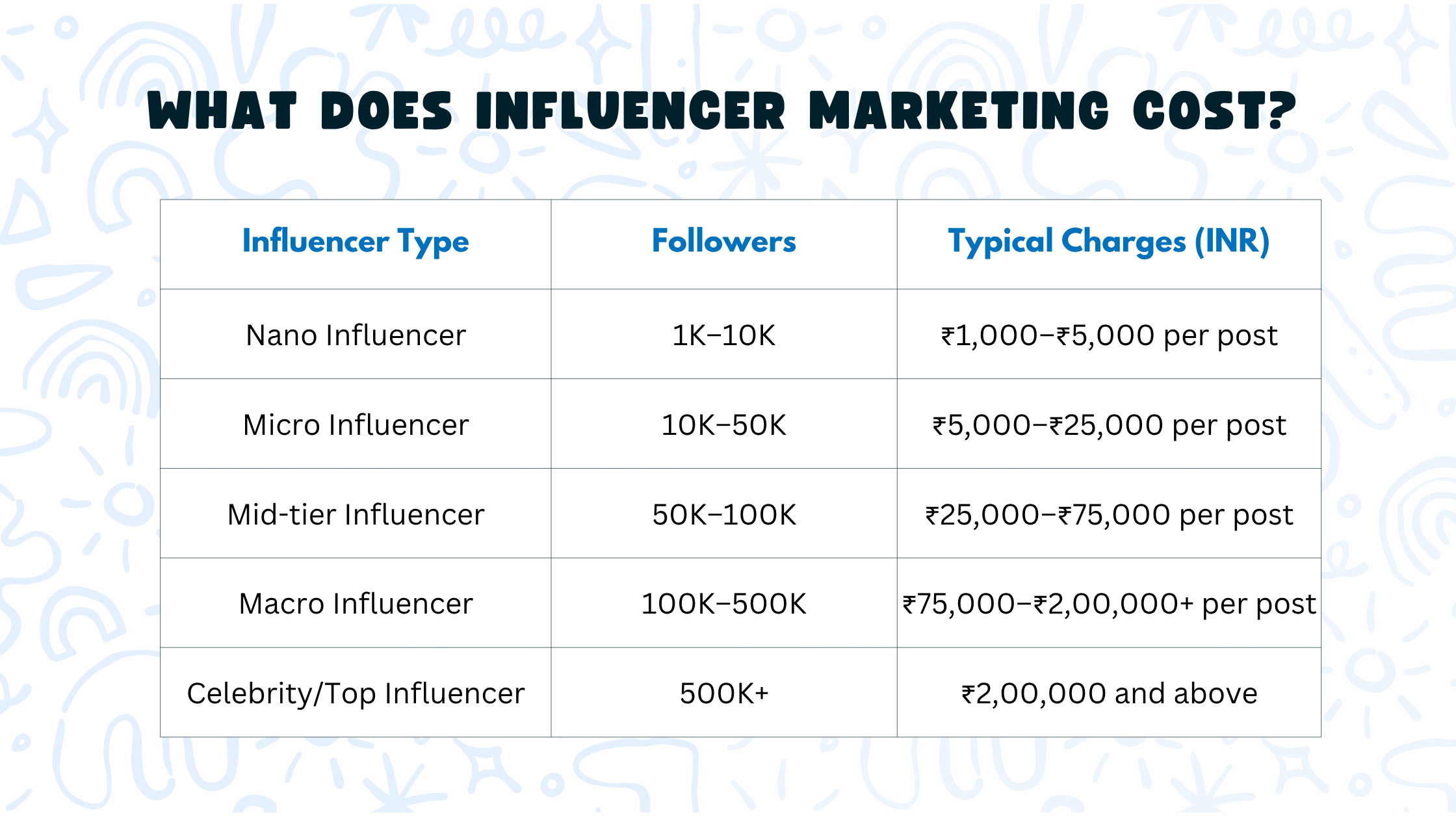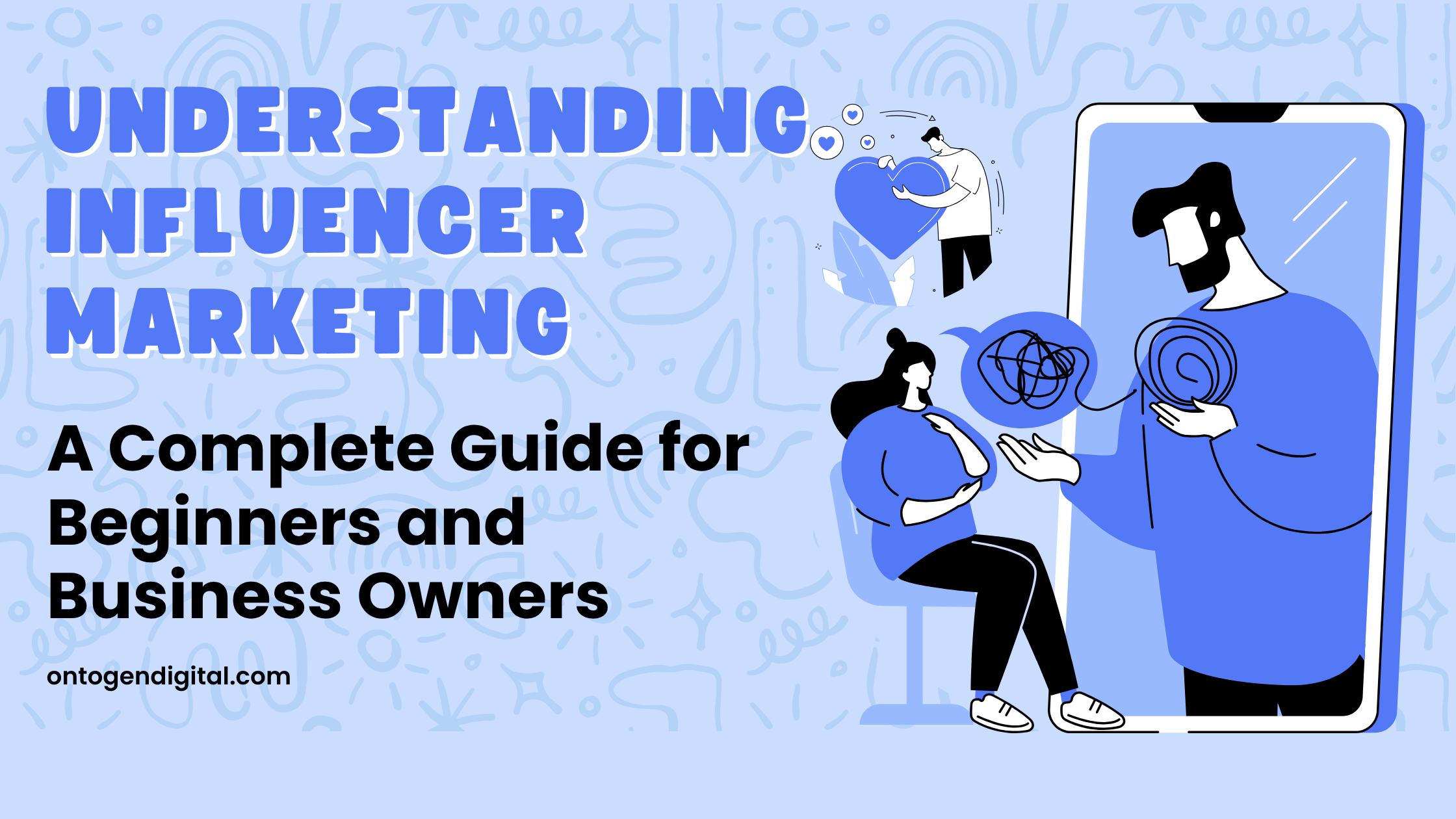9 Jun 2025

Nowadays you must have seen, traditional ads often get ignored. People scroll past them or skip them entirely. What does catch their attention, however, is someone they follow and trust sharing an honest experience with a product or service. That’s where influencer marketing comes in.
Whether you're a new business owner, a startup founder, or someone curious about how influencer marketing works, this guide breaks it down for you step by step. We’ll explain what influencer marketing really is, how it works, how much it costs, and what you need to know before launching a campaign. All in plain language. No marketing jargon. No confusing theories.
What Is Influencer Marketing?
Influencer marketing is a form of social media marketing where brands collaborate with individuals who have a loyal following on platforms like Instagram, YouTube, TikTok, LinkedIn, or even niche blogs. These individuals known as influencers recommend or promote products and services to their audience.
Simply you have seen celebrities on TV ads, influencers tend to feel more relatable. Their audience sees them as peers, not as salespeople. So, when an influencer shares their experience with a brand, it often feels more like a genuine recommendation than an ad.
An example of Influencer Marketing:
If a food blogger shares a video of them cooking with a particular brand of olive oil and talks about how it tastes and smells, their followers are more likely to trust that feedback than if they just saw a traditional ad for olive oil.
Why Influencer Marketing Works
The simple reason behind influencer marketing works is because people trust people, not ads. When someone they admire or follow says something is worth trying, they listen. That’s why influencer marketing has become such a powerful tool for businesses.
According to a HubSpot study, 71% of consumers are more likely to buy a product based on a social media recommendation. That’s because influencers are often seen as experts in their niche whether it’s fitness, tech, beauty, or finance.
For small businesses, this approach offers a way to:
- Increase visibility
- Reach new and targeted audiences
- Build brand credibility
- Get more website visits or sales
How Influencer Marketing Works (Step by Step)
If you’re a business owner, here’s how influencer marketing usually works:
1. Understand Your Target Audience
Before you look for influencers, you need to understand who your customers are. Are they teenagers who love fashion? Are they new moms looking for health advice? The better you know your audience, the easier it becomes to find influencers who speak directly to them.
2. Choose the Right Social Platform
Different platforms serve different audiences. For example:
- Instagram is great for fashion, food, and lifestyle.
- YouTube works well for tech reviews, tutorials, and storytelling.
- TikTok is popular with younger users and is ideal for short, engaging content.
- LinkedIn works for B2B products and professional services.
Choose the platform where your target audience spends the most time.
Read also: Email Marketing Tips for Startups
3. Find the Right Influencers
You can start your search using Instagram’s search function, hashtags, or platforms like Upfluence or HypeAuditor. Look for:
- Authentic content
- High engagement (likes, comments, shares)
- A following that matches your target audience
Avoid choosing influencers based solely on follower count. A smaller influencer with better engagement can often bring better results.
4. Set Clear Goals for Your Campaign
Decide what you want from the influencer partnership. Some common goals should be:
Building awareness, Driving traffic to your website, Generating sales or Getting user-generated content. Your goals will decide what kind of content the influencer should create and how you’ll measure success.
5. Approach and Collaborate
Reach out with a short, clear message explaining why you want to collaborate and what your offer is. Influencers may ask for compensation, free products, or both. Once both sides agree, clarify:
- The type of content (posts, videos, reels, stories)
- Posting schedule
- Captions and hashtags
- Link or discount code (if any)
6. Approve Content and Go Live
Most influencers will share draft content before going live. Give feedback if needed, but avoid micromanaging. Influencers know what works best for their audience.
7. Track and Measure Results
Use tools like Bitly for link tracking or Google Analytics with UTM parameters to monitor:
- Reach and impressions
- Engagement (likes, comments)
- Clicks and conversions
- Sales or signups
Based on the results, you can decide whether to scale, tweak, or pause the campaign.

What Does Influencer Marketing Cost?
Influencer pricing varies based on their follower count, engagement, industry, and content type. Here’s a general breakdown:
Charges may increase if you request video content, product demos, or exclusive content usage rights. For long-term campaigns or brand ambassadorships, influencers may offer monthly packages or performance-based pricing.
What You Should Know Before Getting Started
- Don't Just Run After Follower Count
Someone with a million followers might get fewer results than someone with 20,000 loyal fans. Focus on authenticity and audience fit.
- Always Review and Cross-check Past Work
Before partnering, review an influencer’s previous brand collaborations. Does their style suit your business? Have they worked with competitors?
- Be Transparent
Make sure the influencer discloses the paid partnership, as per platform guidelines. Transparency builds trust.
- Set Expectations Clearly
Draft a written agreement that outlines:
- Timeline
- Type of content
- Revisions (if needed)
- Payment terms
- Performance metrics
Keep Testing
Don’t put your entire budget on one influencer. Test with a few different ones, measure results, and optimize.
Common Myths About Influencer Marketing
- Myth 1: Only big brands can afford it.
Reality: Small businesses thrive with local influencers or nano creators. Costs are low, and trust is high.
- Myth 2: It's all about beauty and fashion.
Reality: Influencers exist in every niche—tech, food, parenting, business, finance, and more.
- Myth 3: One post is enough.
Reality: Influencer marketing works best when you build relationships. Multiple posts or stories over time increase recall.
Read also: Why SEO Still Works Like a Charm in 2025
How Ontogen Digital Can Help
At Ontogen Digital, we understand that influencer marketing isn’t one-size-fits-all. We offer complete support from influencer discovery to campaign execution and reporting. Whether you’re trying it for the first time or looking to scale up, we tailor each campaign based on your goals, industry, and audience.
We help with:
- Choosing the right creators
- Negotiating fair prices
- Approving and managing content
- Tracking performance
We also integrate influencer marketing with your PPC campaigns, content marketing, web development, and SEO services. Want to see how influencer marketing fits your strategy? Let’s talk.
Frequently Asked Questions (FAQs)
- Is influencer marketing suitable for my business size?
Yes, even small local businesses can benefit. Start with local nano or micro influencers who are affordable and relatable.
- How can I tell if an influencer is genuine?
Check for real engagement (comments, likes), consistency, and use tools like HypeAuditor to verify audience quality.
- Do I need a contract with the influencer?
Yes. It protects both parties and clarifies expectations.
- Can influencer marketing bring sales, or is it just for branding?
It can both drive awareness and lead to real sales when paired with offers, links, or promo codes.
- How do I measure success?
Track clicks, conversions, engagement, and sales using tools like Bitly and Google Analytics.
Key Pointers
- Influencer marketing is effective because people trust real-life recommendations more than traditional brand advertisements or sponsored messages.
- Small businesses can grow efficiently by collaborating with nano and micro influencers who offer affordable yet high-engagement promotions.
- Choosing an influencer whose audience matches your brand matters more than just looking at their follower count.
- It’s important to set clear marketing goals and use measurable performance data to understand what’s working and what’s not.
- Start with a small budget and campaign, analyze the results, and improve gradually through regular testing and learning.